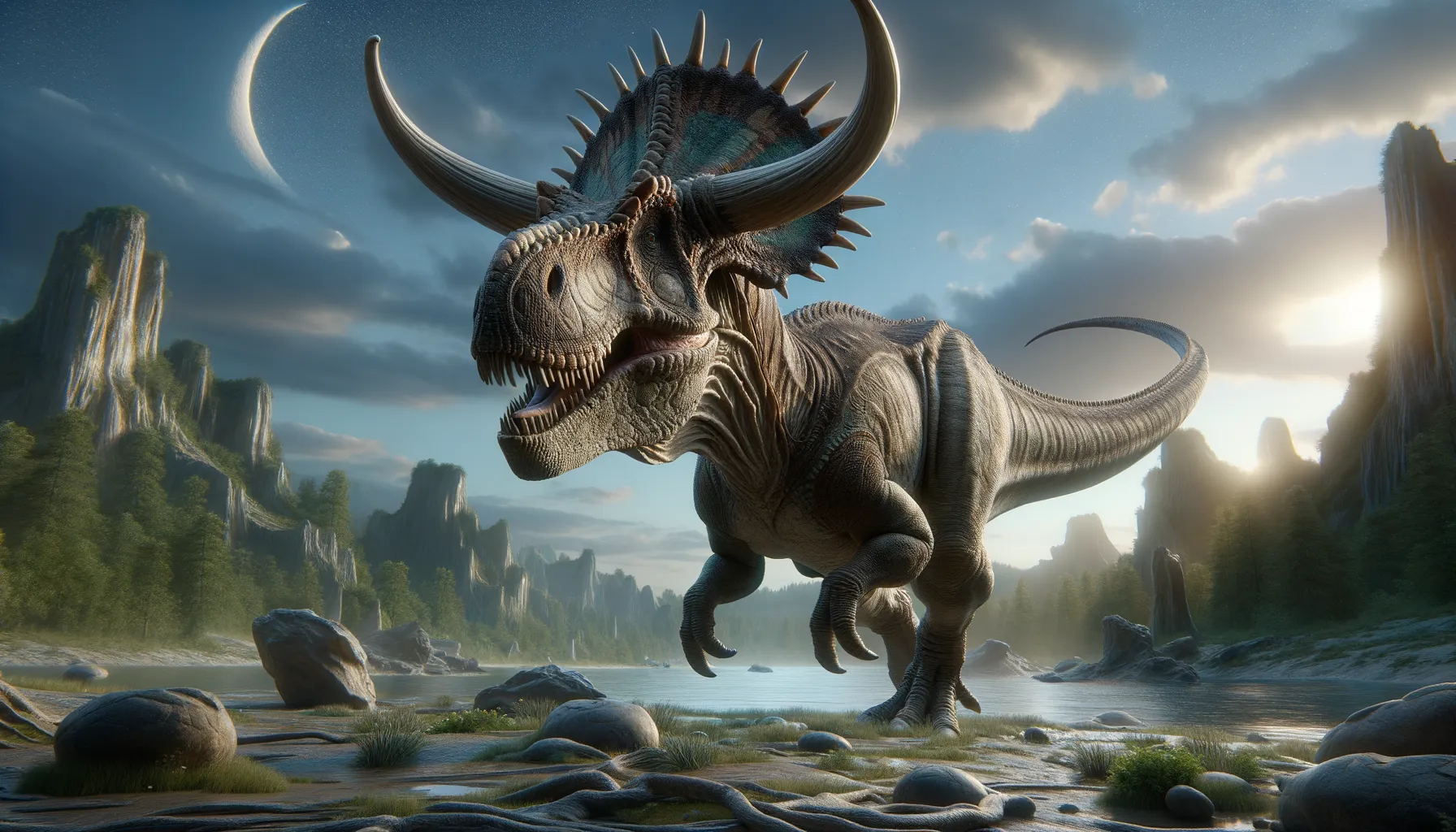
Agathaumas
A horned titan of the ancient plains.
Period
Cretaceous
Length
Up to 30 feet long.
Height
Approximately 10 feet.
Weight
Around 4 to 5 tons.
Agathaumas was a large herbivorous dinosaur with a well-armored body, featuring a skull with a broad, frilled crest. Found in the late Cretaceous period, it is known from incomplete fossils and is a member of the ceratopsid family. Its impressive horns and large body size provided defense against predators. Despite the limited fossil record, it is an iconic representative of its family and showcases the diversity of prehistoric life.
Diet
Agathaumas was herbivorous, primarily feeding on low-lying plants and vegetation. It had strong jaws capable of crushing fibrous plant materials. Despite its large size, its diet consisted of readily available plants, which it grazed in abundance.
Hunting
As a herbivore, Agathaumas did not hunt. Instead, its survival heavily relied on finding and consuming vast quantities of plant material each day. It used its size to reach higher foliage and access a broad range of plant life across its habitat.
Environmental challenges
Agathaumas faced environmental challenges such as seasonal changes affecting the availability of foliage. Fluctuations in climate could result in less food and harsher conditions. Predation by large carnivorous dinosaurs also presented a significant threat, necessitating group defense strategies. In times of drought or overpopulation, competition for resources may have been intense among herbivorous species.
Speed
Slow-moving due to its massive size.
Lifespan
Estimated to be several decades.
First discovery
Discovered by Edward Drinker Cope in 1872.
Fun Facts
- Agathaumas was among the earliest dinosaurs described from North America, known from the 19th century.
- The name Agathaumas means 'great wonder,' reflecting the surprise and intrigue it caused upon its discovery.
- Agathaumas is known primarily from partial skeletons and adds to our understanding of ceratopsid dinosaurs, a group that includes Triceratops.
- While it is not often featured in popular media today, Agathaumas was once considered a giant of its time.
- Agathaumas roamed the Earth during the Late Cretaceous period, making it a contemporary of many well-known dinosaurs.
- Despite being lesser-known, Agathaumas has a rich history in paleontology and sparked early interest in dinosaur studies in North America.
Growth and Development
From a young age, Agathaumas would have grown rapidly to reach its massive adult size. Juveniles were particularly vulnerable to predators until their size offered some protection. Fossil evidence suggests that its species developed their armored crest and horns relatively quickly. These features likely played a role in social interaction and defense from an early stage.
Habitat
Agathaumas inhabited lush floodplains and forested areas with ample vegetation. These areas provided the necessary resources for its large diet. The Cretaceous period was marked by warm climates, allowing extensive plant growth. This dinosaur thrived in environments where water sources and food were plentiful, supporting its significant size.
Interaction with other species
Agathaumas shared its habitat with both herbivorous and carnivorous dinosaurs, leading to interactions that were primarily centered on competition for food and predation threats. It likely formed herds for better defense against predators. Interactions with other herbivores involved competing for foliage, while encounters with predators required defensive posturing.
Natural lifespan
Agathaumas likely lived for many decades in favorable conditions.
Reproduction
Agathaumas probably reproduced similarly to other large dinosaurs, with eggs laid in nests. Nests would likely have been defended by the herd, ensuring the safety of the developing young. The parental care may not have been extensive, but young Agathaumas would have benefited from safety in numbers.
Social behaviour
It is suggested that Agathaumas was a social animal, living in herds for mutual protection. Herd behavior provided significant advantages, especially in warding off predators. Social interactions likely included aggressive displays using their horns and frills for hierarchy establishment.
Fossil locations
The first fossils of Agathaumas were uncovered in the Western United States, specifically in Wyoming. These discoveries were among the first indicatives of large ceratopsid dinosaurs. Fossils remain rare, limiting comprehensive study, yet they highlight the presence of large dinosaur species in that region during the late Cretaceous.
